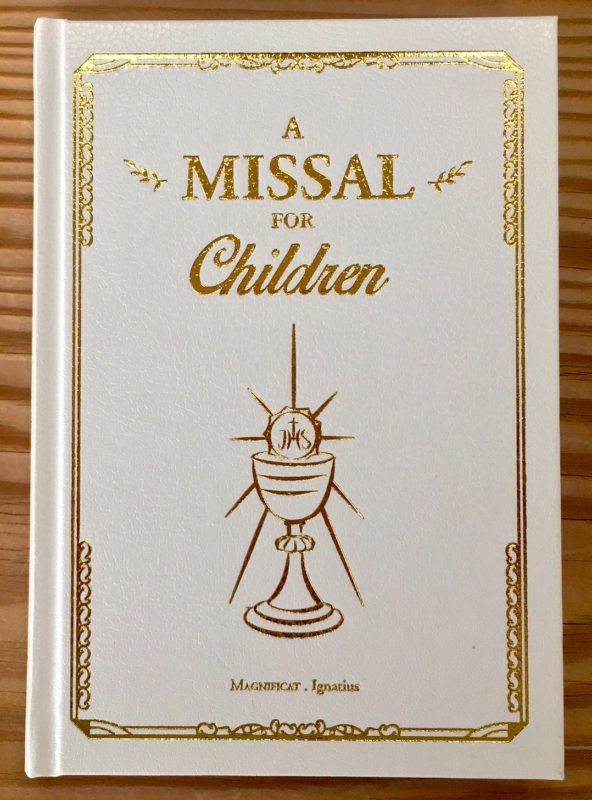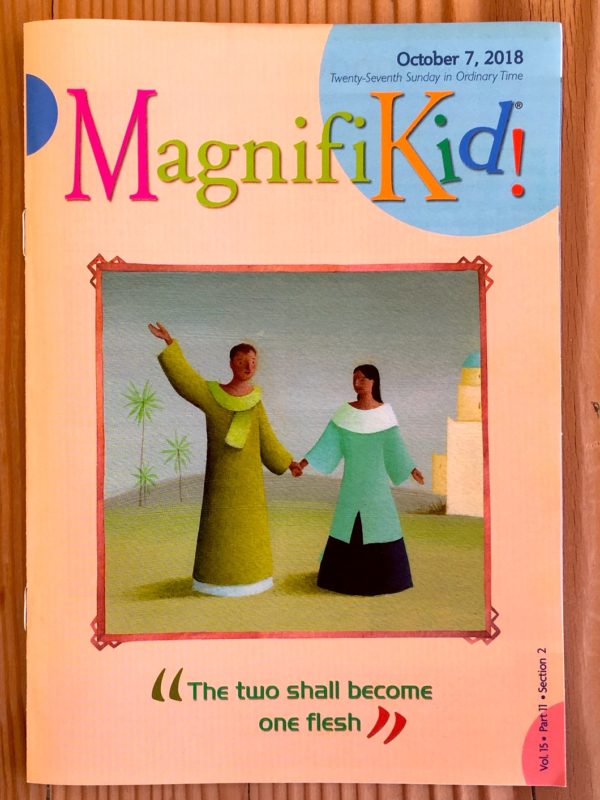“God is love…”
“Whoever is without love does not know God, for God is love.”
Source: USCCB.org 1 John, chapter 4
Jesus Taught Us–Matthew 22:37
“You shall love the Lord, your God, with all your heart, with all your soul, and with all your mind.”
For Parents to Teach to Their Children
The graphic design below labels the Liturgical Colors with the names of the Liturgical Seasons. Ask your child what color the priest is wearing this week for Mass. We are in “Ordinary Time,” so the Chasuble the priest wears is green. We will rapidly be approaching Advent, an wonderful season to explore the colors that appear in the church.

Our Prayers
This week, please read the “Apostles’ Creed” out loud with your children. Read it slowly, line for line, explaining the meaning and significance of the lines to your children. It explains what we believe in as Catholics. If possible, read this each day this week to help your children memorize the prayer.
“The Apostles’ Creed” is a profession of our faith and is a prayer. It states the basic beliefs of the Catholic Church. 
Act of Charity
O my God,
I love you above all things
with my whole heart and soul
because you are all good and worthy of all my love.
I love my neighbor as myself for the love of you.
Source: A Missal for Children “In the Evening” Page 85

What is a Saint?
“A Saint is a Friend of God who Lives with God in Heaven.”
Source: Catholic.org
Please Read and Discuss with Your Children
A saint is a person, a human being, just like all of us. A saint may be a man or a woman; a young person or an old person; a person from any country or continent on earth. They have lived, made mistakes, at times made bad choices and sinned. At some point in their lives, however, a person who has received the sanctifying grace of God through faith in Christ, and most especially in the sacrament of baptism, repented for their wrong doings, changed their path, and has gone on in life to do amazing things to help other people and to serve God, can become a saint. A saint is different from an angel, because an angel is a spirit, and a saint is an exceptional human whom God has sanctified through grace, and whom the Church has recognized as having lived a life of heroic virtue. Saints live with God in the Communion of Saints in heaven. The Blessed Virgin Mary is the greatest saint who ever lived, because by a unique grace, God preserved her from the stain of Original Sin from the moment of her conception in the womb of her mother, St. Anne. The Blessed Virgin was not only conceived free from the stain of Original Sin, but she also never committed any personal sin during her earthly life.
Saint for October-St. Therese and Her “Little Way”
“St. Therese believed that the people of her time lived in too great fear of God’s judgment. The fear was stifling and did not allow people to experience the freedom of the children of God. St. Therese knew from her life that God is merciful love; many scripture passages in the Old and New Testaments bore out that truth. She loved the maternal images for God in the Old Testament and the love of God for us in Jesus Christ. In fact, St. Therese once wrote that she could not understand how anyone could be afraid of a God who became a child. She also knew that she would never be perfect. Therefore, she went to God as a child approaches a parent with open arms and a profound trust.”
“Therese’s “little way” of trusting in Jesus to make her holy and relying on small daily sacrifices instead of great deeds appealed to the thousands of Catholics and others who were trying to find holiness in ordinary lives.”
Source: Catholic.org
Readings for Grown-Ups
Source: USCCB.org 1 John, chapter 4
God’s Love and Christian Life.
7
* Beloved, let us love one another, because love is of God; everyone who loves is begotten by God and knows God.
8
Whoever is without love does not know God, for God is love.
9
In this way the love of God was revealed to us: God sent his only Son into the world so that we might have life through him.f
10
In this is love: not that we have loved God, but that he loved us and sent his Son as expiation for our sins.g
11
Beloved, if God so loved us, we also must love one another.
12
No one has ever seen God. Yet, if we love one another, God remains in us, and his love is brought to perfection in us.h
13
* This is how we know that we remain in him and he in us, that he has given us of his Spirit.
14
Moreover, we have seen and testify that the Father sent his Son as savior of the world.
15
Whoever acknowledges that Jesus is the Son of God, God remains in him and he in God.
16
We have come to know and to believe in the love God has for us.
God is love, and whoever remains in love remains in God and God in him.
17
In this is love brought to perfection among us, that we have confidence on the day of judgment because as he is, so are we in this world.i
18
There is no fear in love, but perfect love drives out fear because fear has to do with punishment, and so one who fears is not yet perfect in love.
19
We love because he first loved us.
20
If anyone says, “I love God,” but hates his brother, he is a liar; for whoever does not love a brother whom he has seen cannot love God* whom he has not seen.j
21
This is the commandment we have from him: whoever loves God must also love his brother.k
Readings on the Soul for Grown-Ups
II. “BODY AND SOUL BUT TRULY ONE”
362 The human person, created in the image of God, is a being at once corporeal and spiritual. The biblical account expresses this reality in symbolic language when it affirms that “then the LORD God formed man of dust from the ground, and breathed into his nostrils the breath of life; and man became a living being.”229 Man, whole and entire, is therefore willed by God.
363 In Sacred Scripture the term “soul” often refers to human life or the entire human person.230 But “soul” also refers to the innermost aspect of man, that which is of greatest value in him, 231 that by which he is most especially in God’s image: “soul” signifies the spiritual principle in man.
364 The human body shares in the dignity of “the image of God”: it is a human body precisely because it is animated by a spiritual soul, and it is the whole human person that is intended to become, in the body of Christ, a temple of the Spirit:232
Man, though made of body and soul, is a unity. Through his very bodily condition he sums up in himself the elements of the material world. Through him they are thus brought to their highest perfection and can raise their voice in praise freely given to the Creator. For this reason man may not despise his bodily life. Rather he is obliged to regard his body as good and to hold it in honor since God has created it and will raise it up on the last day. 233
365 The unity of soul and body is so profound that one has to consider the soul to be the “form” of the body:234 i.e., it is because of its spiritual soul that the body made of matter becomes a living, human body; spirit and matter, in man, are not two natures united, but rather their union forms a single nature.
366 The Church teaches that every spiritual soul is created immediately by God – it is not “produced” by the parents – and also that it is immortal: it does not perish when it separates from the body at death, and it will be reunited with the body at the final Resurrection.235
367 Sometimes the soul is distinguished from the spirit: St. Paul for instance prays that God may sanctify his people “wholly”, with “spirit and soul and body” kept sound and blameless at the Lord’s coming.236 The Church teaches that this distinction does not introduce a duality into the soul.237 “Spirit” signifies that from creation man is ordered to a supernatural end and that his soul can gratuitously be raised beyond all it deserves to communion with God.238
368 The spiritual tradition of the Church also emphasizes the heart, in the biblical sense of the depths of one’s being, where the person decides for or against God.239
Source: The Catechism of the Catholic Church
Celebrating the Soul in Song–“How Great Thou Art” From The Best of the Priests
For More from The Priests
Readings for Children
An Excerpt from MagnifiKid! October 7, 2018 “Loving Forever”
Parents, please read this to younger children, explaining as you go. It’s an excellent explanation of love and promises.
“Loving for ever” By Lisa Reno, Page 3 Vol. 15. Part 11. Section 2
“Let’s be friends for ever!” Have you ever said these words to a special friend? Something inside all of us wants love to last for ever. When a man and a woman love each other and get married, they give their word that they will be faithful to each other until death. They make a serious promise! Even though most things in this life are temporary, they want their love to last forever.
Sometimes, unfortunately, people stop loving each other. Jesus knows this very well. He knows that keeping our promises is difficult, sometimes almost impossible. That’s why Jesus loved us even when it meant dying on the cross. He wanted to show us what true love looks like. Even though love may seem to die, Jesus can raise it up again. His love makes it possible for us to love for ever.”
An Explanation of “Our Soul”–Please read and discuss with your children
God made us in his image and likeness, and this image and likeness of God refer to our spiritual nature—our soul. But human beings are not just spirits, like God and the angels; rather, we are a union of body and spiritual soul. Because bodies are made of matter (physical stuff), they can die; but the human soul, which is not made of matter (it is spiritual like God and the angels), never dies. God is pure Spirit, but we have both a body and a spiritual soul (we straddle the line between the animal and the spiritual worlds). Sometimes people think of our heart as our soul, but the soul is actually united with the whole body. Our soul is where we have the spiritual abilities of knowledge and love, like God and the angels, but unlike the rest of the animal world which can neither know the good, nor love and choose it. When we die, our body passes away, but our soul does not. After we die, the souls of those who die in God’s friendship and grace enter heaven (or purgatory, waiting to enter heaven as their souls are purified from the effects of sin). In heaven, all blessed souls who are separated from their bodies wait for the Resurrection of the body in the second coming of Christ, in which our souls will be rejoined with our risen bodies, and we will be “in communion with God” in both body and soul.
Our Writing Project
This week, we are making a “mini poster” for your child’s room so that they can reflect upon the meaning of their “soul.” Invite them to decorate a small piece of white watercolor or drawing paper and write the word “SOUL” across the page. Encourage them to decorate the paper as they wish. I used liquid watercolors and a small paint brush on a quarter page of watercolor paper. I used the “Liturgical Colors” to reinforce the child remembering what they are–green, lavender, white, gold, red and rose.

Our Art Project
The art project this week is a watercolor featuring “Liturgical Colors.” The liturgical colors are: green, lavender, white, gold, red and rose. I drew circles with a white water soluble pastel on watercolor paper before painting, then I painted one color at a time in “patches.” When the painting dried, I traced circles with a pencil using any household item that had a circle base, then I cut them out. I played with different arrangements of the cut-out circles before glueing them onto a sheet of watercolor paper. I like how the pastel resists the watercolor leaving interesting white marks. Young children will need a older partner for this project. It is simple but takes a bit more time than a plain painting or drawing. Or, they can make simple stripes of liturgical colors on the paper, like the painting below, and that is great, too!


Our Materials
Suggested Homework Activities
Invite your family members to “make and keep a promise.” Here’s what MagnifiKid!, page 3, suggests this week: “Make a promise to yourself (or to God) today to do something good every day this week–even if difficult. You could promise to say a special prayer, to smile more often, or to talk to a classmate who doesn’t usually speak to you. Whatever it is, be faithful to your promise!”
Please read with your child: “The Tower of Babel” Genesis, chapter 11:1-9 from your family Bible or a Catholic Children’s Bible. Click on the link to the story from the USCCB.org.
Note to Parents* Next week we will begin to learn about Jesus by learning the Mysteries of the Rosary .
For a wonderful guide, check out Child’s Guide to the Rosary by Elizabeth Ficocelli:







